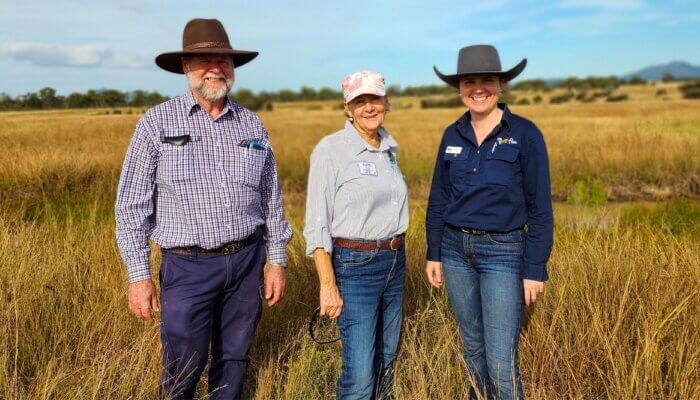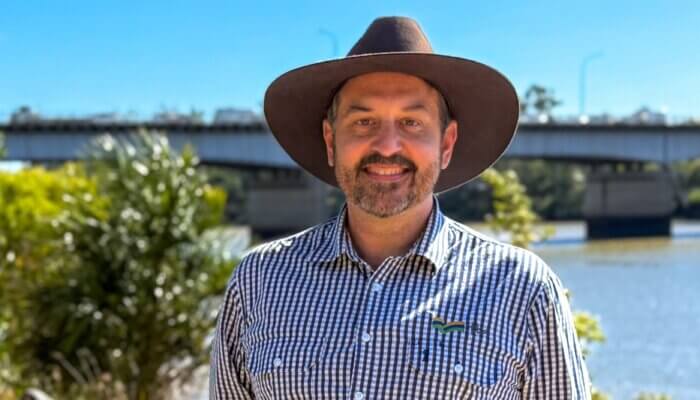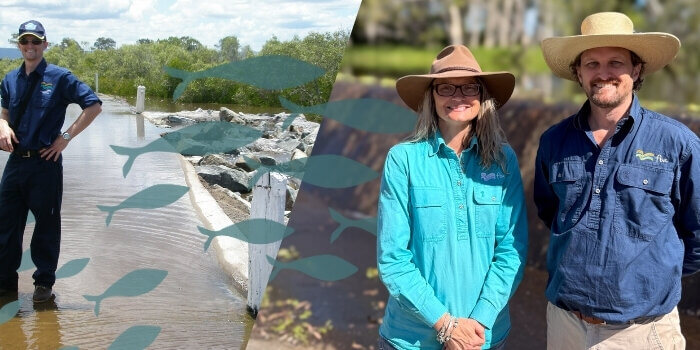
Keeping the Legacy of Fishways Flowing Forward
Posted on July 16th, 2025
Nearly 20 years ago, FBA’s Environment leader Shannon van Nunen helped install two fishways at the St Lawrence wetland. Now, with decades of experience and valuable insights gained, he’s back with the FBA team to upgrade and improve the structures.
Over the years, FBA has worked across more than 30 projects working to restore or establish fish passage in the Fitzroy region. Shannon has worked on around 25 of these himself along with Fisheries Biologist and the principal of Australasian Fish Passage Service (AFPS), Tim Marsden.



The ability of fish to move freely through river systems is essential to the survival and health of aquatic life in the region and many others. Freshwater streams in the area support about 49 fish species, nearly half of which are diadromous, meaning they rely on access to both estuarine or marine waters and freshwater habitats to complete their life cycles. The remaining species live entirely in freshwater, yet many of these also undertake extensive migrations within the river system. This highlights the critical importance of both upstream and downstream movement for the lifecycle of almost all freshwater fish in the region.
Unfortunately, human-made barriers such as dams, culverts, and weirs have significantly disrupted these natural migration pathways. These obstructions are a major contributor to declining species diversity and the overall health of aquatic ecosystems.
The fishway upgrades at St Lawrence are especially exciting because they are based on learnings and research from almost 20 years of learnings and take a more holistic approach.
“Recent testing shows that the St Lawrence fish passages are working so we can now say the shelf life of this work is good. The proposed changes to these structures will enable smaller fish to migrate upstream,” Shannon said.
“This design is almost an overhaul of the current structures. Migration doesn’t happen quickly, the recently hatched juveniles, are small and have limited energy. When they arrive at this passage, they have a big climb so we’re trying to facilitate passage for them so that each time they reach a new step in the fishway ladder they’re able to rest and eat and take their time so they’re more likely to make it through.
“One of the best parts of working in this space is how it is always evolving and changing. The current fishway designs at St Lawrence was a designed based on American fish, like salmon, which leap and migrate up things like waterfalls so it’s very different to the fish we have in central Queensland. I think that’s a great example of why we need to be constantly evolving and applying findings in this space.”
Freshwater wetlands, especially coastal wetlands, also play a crucial role in supporting fish populations. They provide essential habitat for a variety of species, including safe, food-rich nurseries for juvenile diadromous fish. These wetlands are key to ensuring young fish can grow and thrive before moving on to other parts of the river system. Protecting and restoring access to these vital habitats is an urgent priority in maintaining the region’s overall health.



To protect the St Lawrence wetlands, the project is also implementing feral deer and feral cat control.
“Doing this additional work involves looking at the whole environment around the waterways not just the waterways themselves. This is the first time we’ve done work involving feral deer and cats so the results will be exciting,” Shannon said.
This project also works with First Nations to combine knowledge to improve the wetlands.
“You don’t have to be an aquatic scientist to have a good idea. Knowledge comes from everywhere and everyone’s experiences and the things they may have seen or heard, and their perspectives contribute to great ideas,” Shannon said.
Although the structures are called fishways, fish aren’t the only species that benefit from them.
“Probably one of my favourite species to see using the passages is eels. People forget eels are an important part of ecosystems as well and they have such a unique life cycle. As adults they stay in the freshwater systems all through our region but for whatever reason they get signals to head out to sea and they travel thousands of kilometres to meet up at the coral reefs. Then they have a spawn event and the larvae float along the East Australian current and the wind blows them into freshwater estuaries as eggs. The eggs hatch once they’re in the right water chemistry and they form what are called glassy elvers which you can see through —they’re transparent. And they kind of rebel against how the passages are intended to be used because they climb up and over the concrete like snakes, but they make it work for themselves,” Shannon said.
While this work is not new for Shannon, it is for FBA’s Waterway Coordinator, Jodee Forbes and she couldn’t be more excited to be stepping into this work.

“It’s exciting getting to work with everyone from AFPS, to First Nations peoples and also Shannon who has a wealth of knowledge in this space and it’s been great getting to do the research and learning to ensure these upgrades and pest management work will be effective,” Jodee said.
Shannon and Jodee hope this project will be part of changing the way environmental projects like fishways are perceived and be part of the learning for future work.
These structures are more than engineering solutions; they are a testament to the power of collaboration, innovation, and long-term thinking in environmental restoration. As we look to the future, the success of this work inspires continued action to protect and enhance the health of our waterways and the species that call them home.









